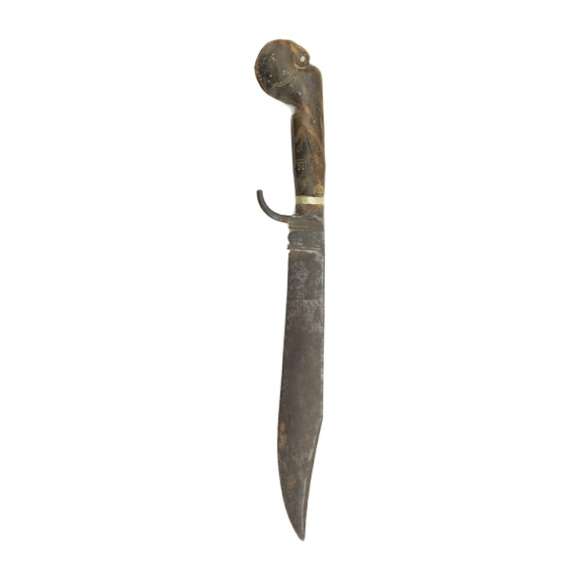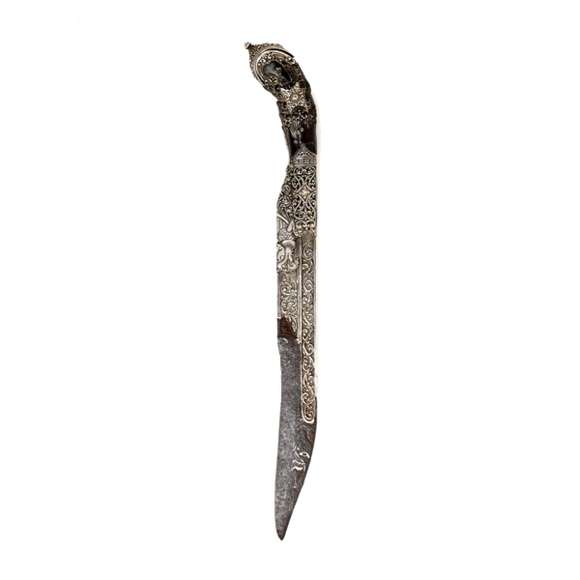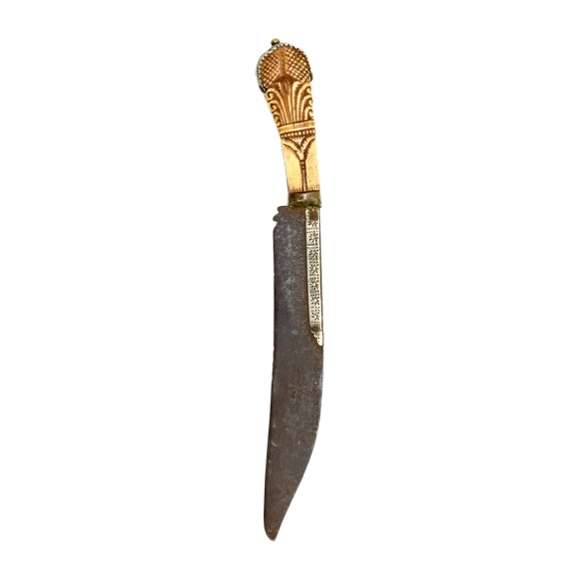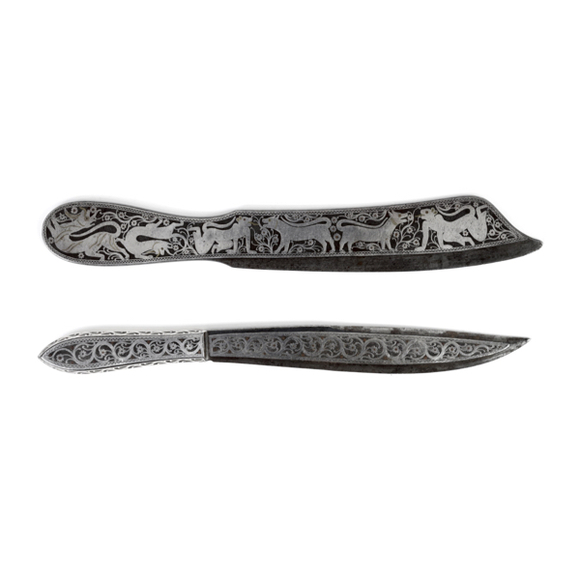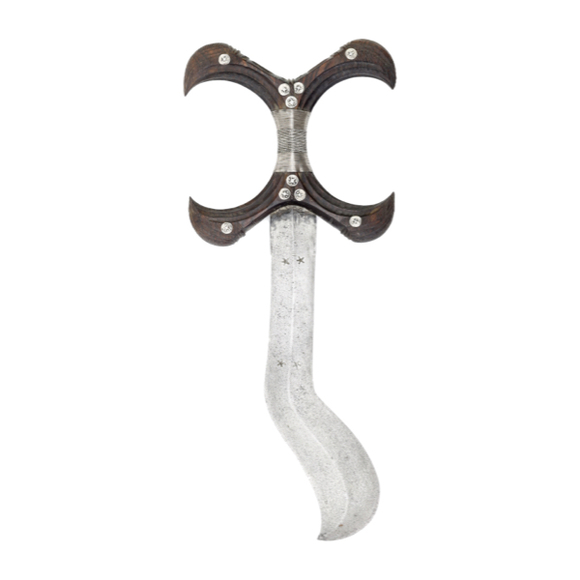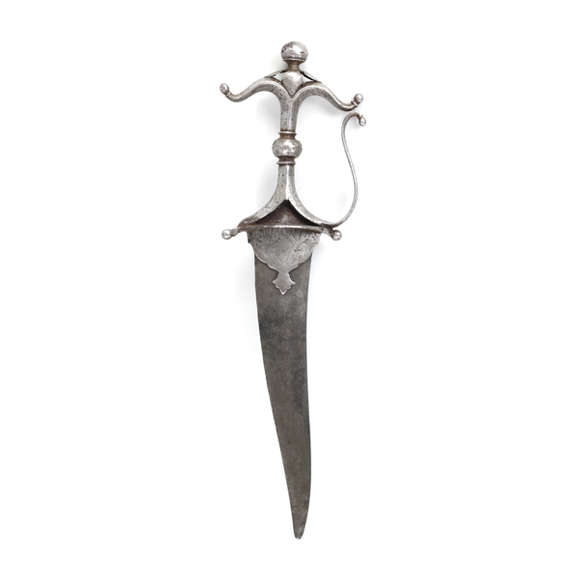Language: Sinhala
Introduction
The antique knives of Sri Lanka (Ceylon) are known among collectors for their elaborate decoration, executed in fine workmanship. Many of the best were made in the Four Workshops or pattal-hatara, working exclusively for the king, and were bestowed to nobles and officials together with the kasthané and a cane as a sign of rank and / or office. Others were presented as diplomatic gifts.
Differentiation
These knives are indiscriminately referred to as pihā-kaetta, in following of their mention as such in Parker (1909).1 However, further study of the literature reveals that pihā-kaetta literally means "billhook knife", which is just one of various types of Sinhalese knives.
In his defense, Parker also mentions that by his time such knives were almost invariably called gal-mita pihē meaning "stone handled knife", regardless of the materials of their hilts, indicating some fluidity and perhaps confusion in terms used, even by the Sinhalese themselves.
Deraniyagala (1942) makes a distinction between several types. According to him, the pihā-kaetta describes the various forms of large, chopper-like knives encountered. The smaller, more delicate ones that come in a scabbard together with a stylus for writing on palm leaf, are called ul pihiya.2
Finally, De Silva & Wickramasinghe (2007) clear up the matters with the contemporary romanization of Sinhala: The chopper type is correctly romanized today as pihiya kättha. Pihiya is knife. Ul pihiya literally means "sharp knife", which according to them denotes a knife with an acute point. 3
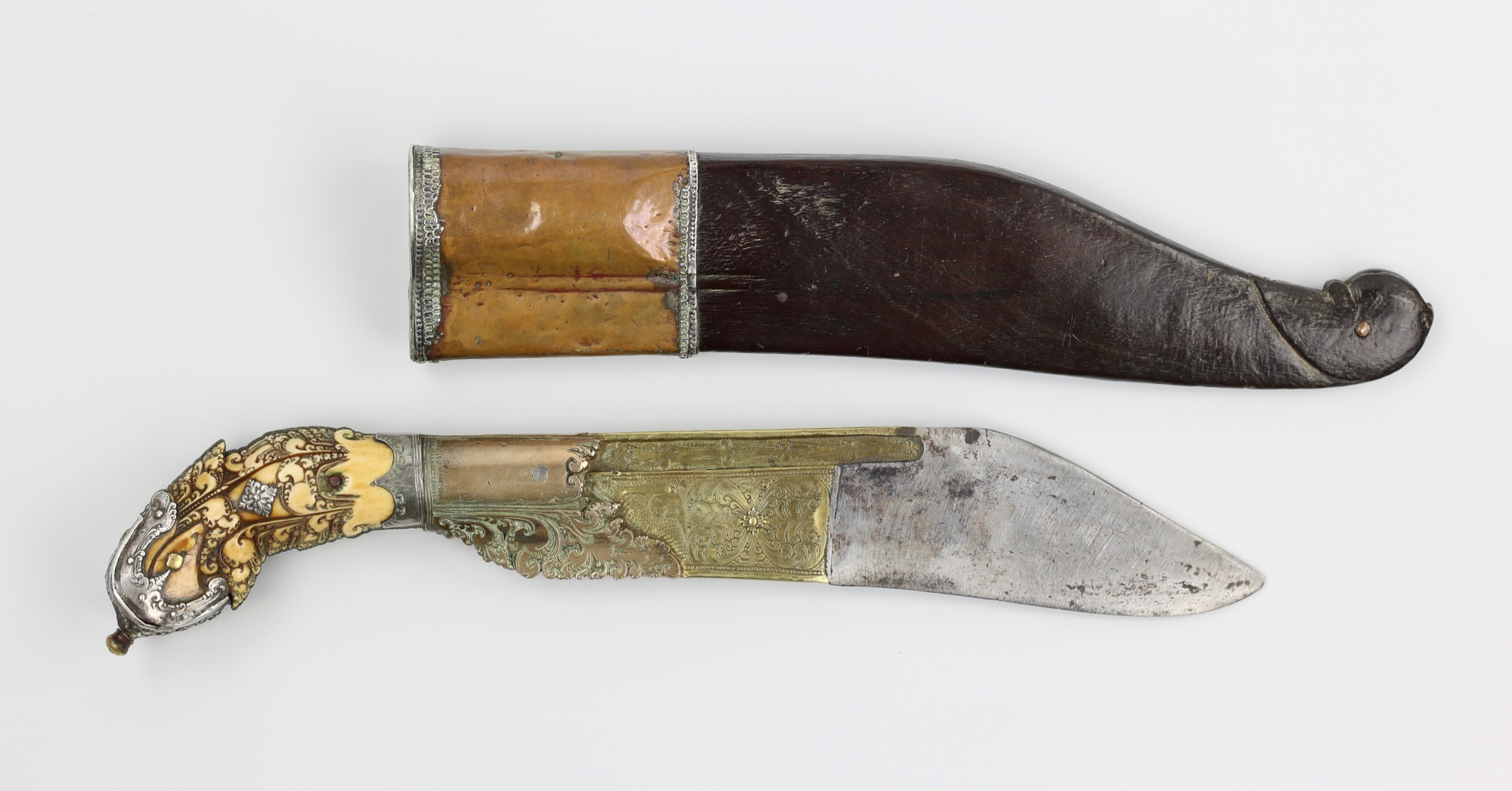
A large pihiya kättha.
Notes
1. H. Parker, Ancient Ceylon. Luzac & Co, London, 1909. Page 531.
2. P.E.P. Deraniyagala, Sinhala Weapons and Armor. Journal of the Ceylon Branch of the Royal Asiatic Society Volume XXXV. No. 95 Part III, 7th December 1942. (Reprint, Ken Trotman, 2009.) Pages 109 - 110.
3. P.H.D.H. De Silva & S. Wickramasinghe, Ancient Swords, Daggers & Knives in Sri Lankan Museums. A Publication of National Museums of Sri Lanka, 1st Edition, 2007. Addendum, pages 1 and 2.

